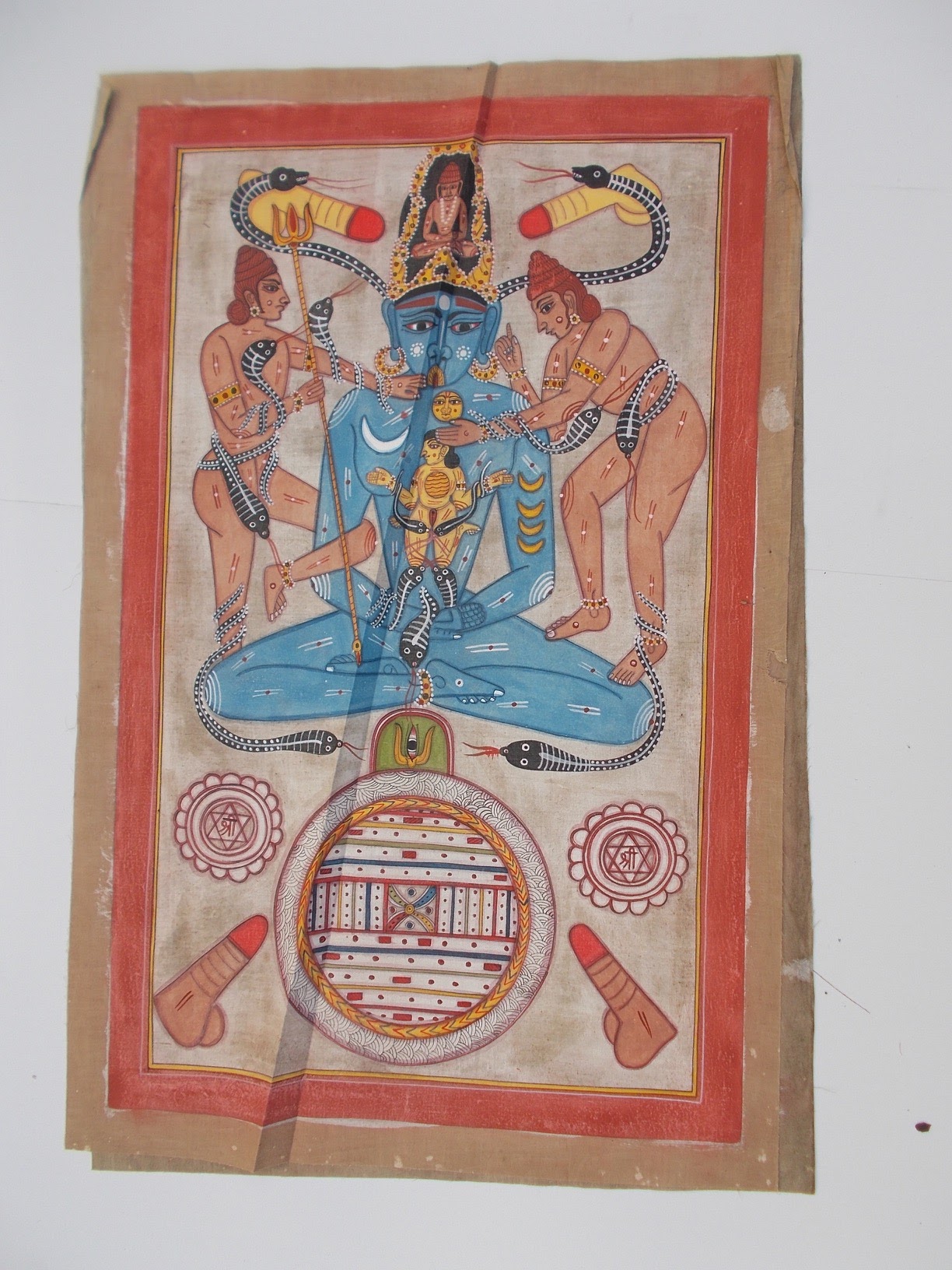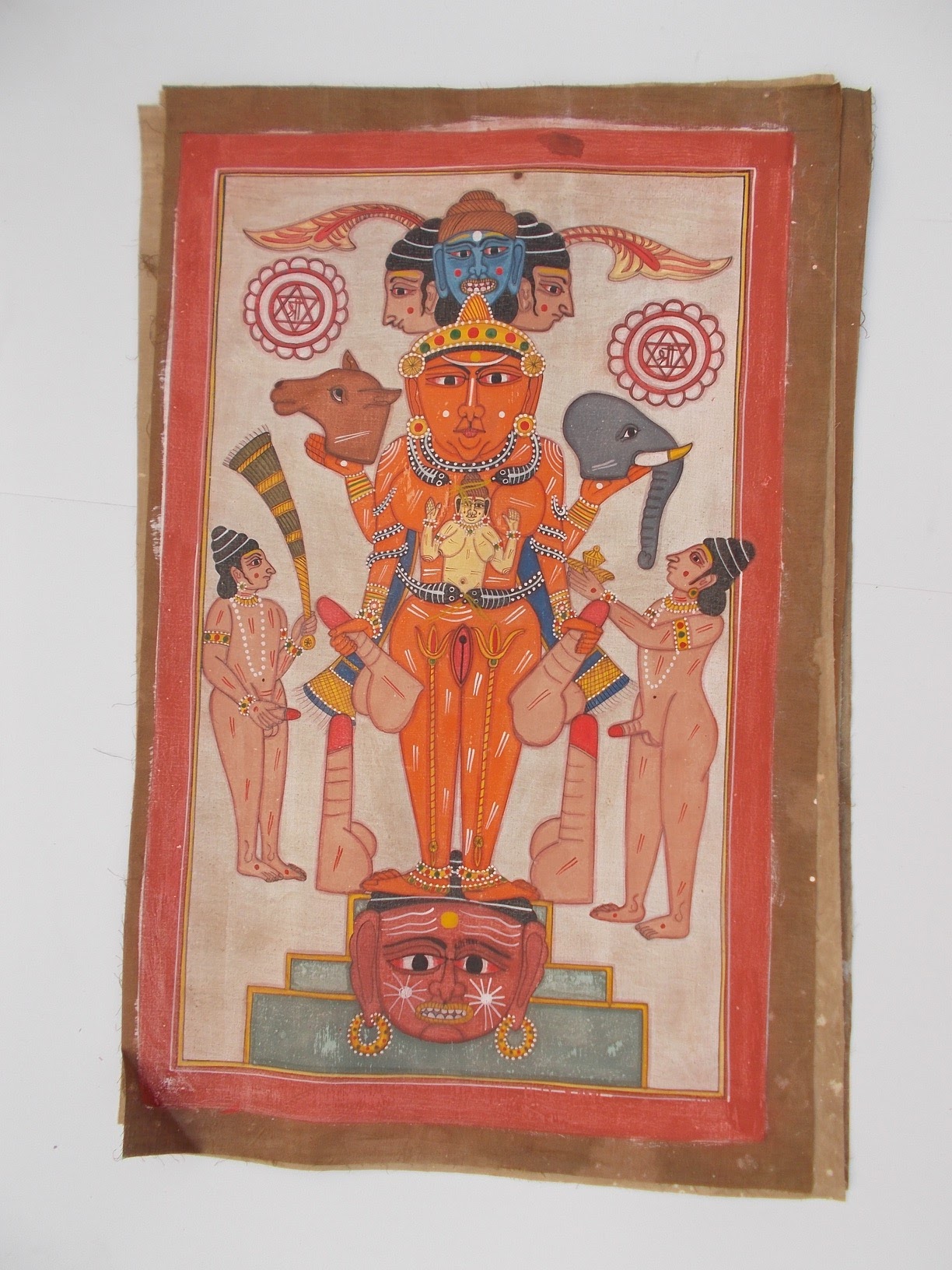Tantra Paintings
Art365 | Delhi, India
There can be no quick and easy understanding of Tantra, especially among sceptics. It may be understood by believers who are willing to undertake inner meditative action. Tantra is a special manifestation of India feeling art and religion. There is only one thread that can guide us through the labyrinth, whereon all the different manifestations of Tantra can be strung. This thread is the idea that Tantra is cult of ecstasy, focused on a vision of cosmic sexuality, with a complex of signs and emotive symbols converging upon that vision.
Tantra deals in love and love needs objects. One cannot love nothing. It maintains that instead of suppressing pleasure, vision and ecstasy, they should be cultivated and used. Also that sensation and emotion being the most powerful human motive forces, instead of being crushed down they should be harnessed to the ultimate goal. Properly channeled, they can provide unparalleled energy, benefitting both society and the individual, for which purpose the body needs to be carefully cultivated, with an inbuilt framework of ritual and practice to prevent complacency and crass self-indulgence.
Tantra’s vivid world of creative imagination draws on the fabulous world of Indian myth and legend and weaves the elements together into a dense tissue of meaning. This could well be adapted to embrace the material science of the industrial world. In fact, one branch of Tantra has always dealt with physics and medicine, as if they were traditionally understood, and so it is possible to reconcile Tantra with a subject like chemistry. To a Tantrik, the table of elements or the abstract form of molecular structures and particle physics amount to revelations of the action of a beloved devata and may be welcomed as such.
Tantra has been continued through family groups, down lines of pupil teacher descent, wherein the pupil often spent several years in finding the right teacher. Tantra art, used either for explanations between teacher and pupil, or for individual rites, mostly fits into the modest person to person context, done on small scale and immediate brushwork with no pretensions at perfection. Characteristically, here the artist always knows beforehand what he intends to do, with even the minor details prescribed and standardised. Colour is based on a standard repertoire of hues, each with their own definite significance, with powerful emotive effects. As Tantra art was never concerned with imitating the external world, its figures and colours are the way they are, repetitive and natural.
For prices and other information, please call or email.
If there’s something you’re looking for and don’t see it here, feel free to reach out and we’ll source it for you.













































































































































